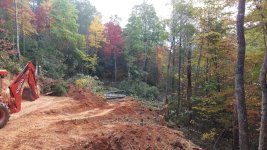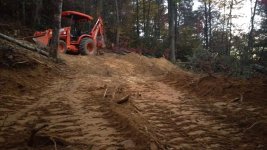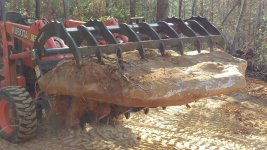rScotty,
I am going to nicely disagree with your statement on loaded tires does not lower the center of gravity by much and the debate-able advantage of loaded tires on slopes.
My
M59 with backhoe and Paladin grapple scales ( run across multiple DOT and gravel pit scales ) at 11,200-11,500 pounds with only rear tires loaded with beet juice per Kubota recommendations. Each rear tire has 589ish pounds of beet juice in it. Tires have an air cushion at top of each tire so that when the tire valve is at the top of the rim then the beet juice level is 3-4 inches below the valve so ride is not noticeably affected due to air cushion. The CG of each loaded tire is below the axle center and the additional 1,178 pounds in rear wheels is 11% of the total machine weight. Regardless of where the CG of a new
M59 TLB, unless it is lower than the centerline of the rear axles, the additional 11% of weight below the axle centerline manifests itself as a significant improvement in lowering the CG. The additional weight has many advantages. Filling the loader, especially rail road ballast, is easier because tire spin nearly nonexistent. Travel across level ground and up hills when the grapple of loader bucket is fully loaded is much safer with the additional loaded rear tire counterweight. Even with loaded rear tires the back end will get bouncy ( light ) at low speed when the grapple is loaded with 4,000 lbs plus of stone. I always back down a hill when grapple or bucket is fully loaded to keep CG below the load. I limit crossing slopes with “heavy” loads as a matter of safety so no issues with sliding.
Swinging a heaped 24 inch bucket from far left to far right, at slow speed, loaded with mud/ silt is far less sphincter puckering with loaded tires. Watching the left outrigger pad come off the ground is always fun.
A few pics of loads, grades, and work.




